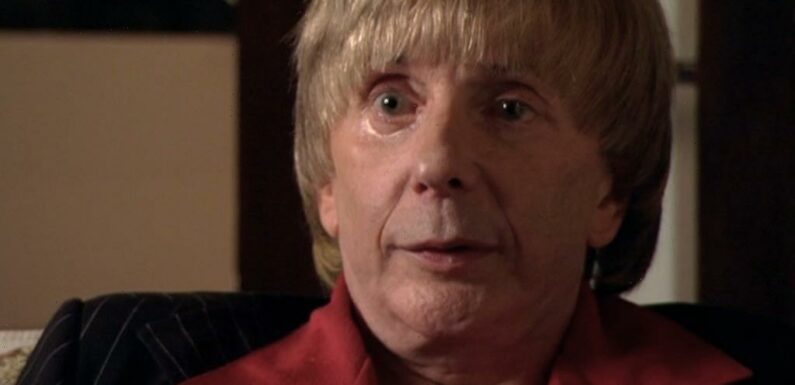
The pop hits of Phil Spector — and there are many of them — depend on a theatrical maximalism. As a producer, Spector’s innovation was the “Wall of Sound,” a shock-and-awe approach to music that is as dazzling as it is overwhelming. Just listen to the Ronettes’ “Be My Baby” or Ike & Tina Turner’s “River Deep — Mountain High” to understand his approach: The songs are so densely orchestrated that they’re practically tactile.
Spector’s reputation today is, rightly, more rooted in the events of his life than in the art he made. (He died in 2021, incarcerated for the 2003 murder of the actor Lana Clarkson.) But “Spector,” a four-part documentary series on Showtime directed by Sheena M. Joyce and Don Argott, works to make a case that his music — its particular qualities and the stressful process by which it was made — helps explain the man.
Like many artists, Spector drew from life; his first hit, the Teddy Bears’ “To Know Him Is to Love Him,” takes its title from the epitaph on his father’s tombstone. When Spector was a child, his father died by suicide, a violent and baleful act that hung over Spector’s life. Children in his situation, Vikram Jayanti — a documentarian who conducted a rare interview with Spector — tells the camera, “frequently turn into control freaks. … He was a fiend for order.”
That much becomes apparent. After some brief engagement with his childhood, we arrive at his prodigious early music career, in which Spector’s domineering personality and outré personal presentation made waves. Darlene Love recalls to the camera how Spector wore a suit, tie and heels during the “He’s a Rebel” sessions — a bit that seems less like gender play than an attempt to extend his frame and appear more dominant, as he’d do during his trial by wearing tall bouffant wigs. Diminutive of frame, Spector became a giant in other ways; the pop acts he marshaled were largely anonymous, so that the producer could be the star.
The documentary does an excellent job of telling the story of Spector’s music career — economically but with sufficient context, and soundtracking, to understand both the textured quality of his music and the hell his performers went through to achieve it. We’re told that Spector often worked impaired by heavy drinking, and that he brandished a gun in at least one session with John Lennon, firing it into the ceiling. (Lennon, the story goes, assumed the gun was firing blanks, until the bullet was retrieved the next day.) Archival footage of the late Ronnie Spector, the producer’s second wife, includes her commenting that her Svengali husband exclusively called her Veronica, as if to avoid even subconsciously reminding her of whatever power she’d had as a Ronette.
But it’s in the parallel telling of Spector’s and Clarkson’s stories that “Spector” distinguishes itself within its genre. Here we find two journeys through an entertainment industry that seems to have far more painful stories than happy ones. Spector was a desperately lonely, angry and violent figure who was unable to find solace in great success; his complicated relationship with his daughter, who speaks on the record, may have been one of the only places his humanity expressed itself. Clarkson, we’re told by those who loved her, was a perennially hopeful figure who just couldn’t find her way to her dream. A former L.A. County homicide detective tells us that he was disheartened by media coverage of Clarkson’s life as a “B-movie actress”: “When people say that, what do you automatically think: some low-budget, horrible actress in movies that you never heard of. To me, it was a form of degradation.”
And so “Spector” corrects the record, not by inflating Clarkson’s work, but by illustrating the person that she was, in intriguing and moving counterpoint to her convicted killer. At the time of her death by gunshot, Clarkson was trying to rebuild after painful wrist injuries derailed her attempt to reinvent herself as a comedian. Her work as a hostess at the House of Blues, where she collided with Spector, was an attempt to pay the bills, but also to find an outlet for her ebullience, her need to connect. Spector, whose relationship with alcohol toggled off and on throughout his life, was on a bender, seeking obliteration. After leaving the bar together, Clarkson was found dead in Spector’s mansion.
Perhaps the most revealing detail in “Spector’s” double-sided narrative is the way that Spector’s legal team saw Clarkson. They brought in as evidence the reel of comedy sketches she’d made, in an attempt to discredit her as a failed fame-seeker; what came through, instead, was her spark, now extinguished. A juror, one who’d never heard of Spector or Clarkson before the trial, weeps recalling it — a touch that, in a documentary less sensitive to both parties, might have felt like exploitation.
Indeed, this series extends consideration to Spector as well. It’s not interested in exonerating him, although we do hear out his defense team’s arguments, in a relitigation that is one of the documentary’s less interesting threads. But a figure best remembered for strange statements and hair teased to heaven emerges as someone who could only exorcise his pain through control, or by ceding control to drink. Viewers will not come to love Phil Spector, and that’s not the goal here. But will certainly know him.
“Spector” will be available to stream Friday, November 4 and will air on Sunday, November 6 at 9 p.m. ET/PT on Showtime.
Read More About:
Source: Read Full Article